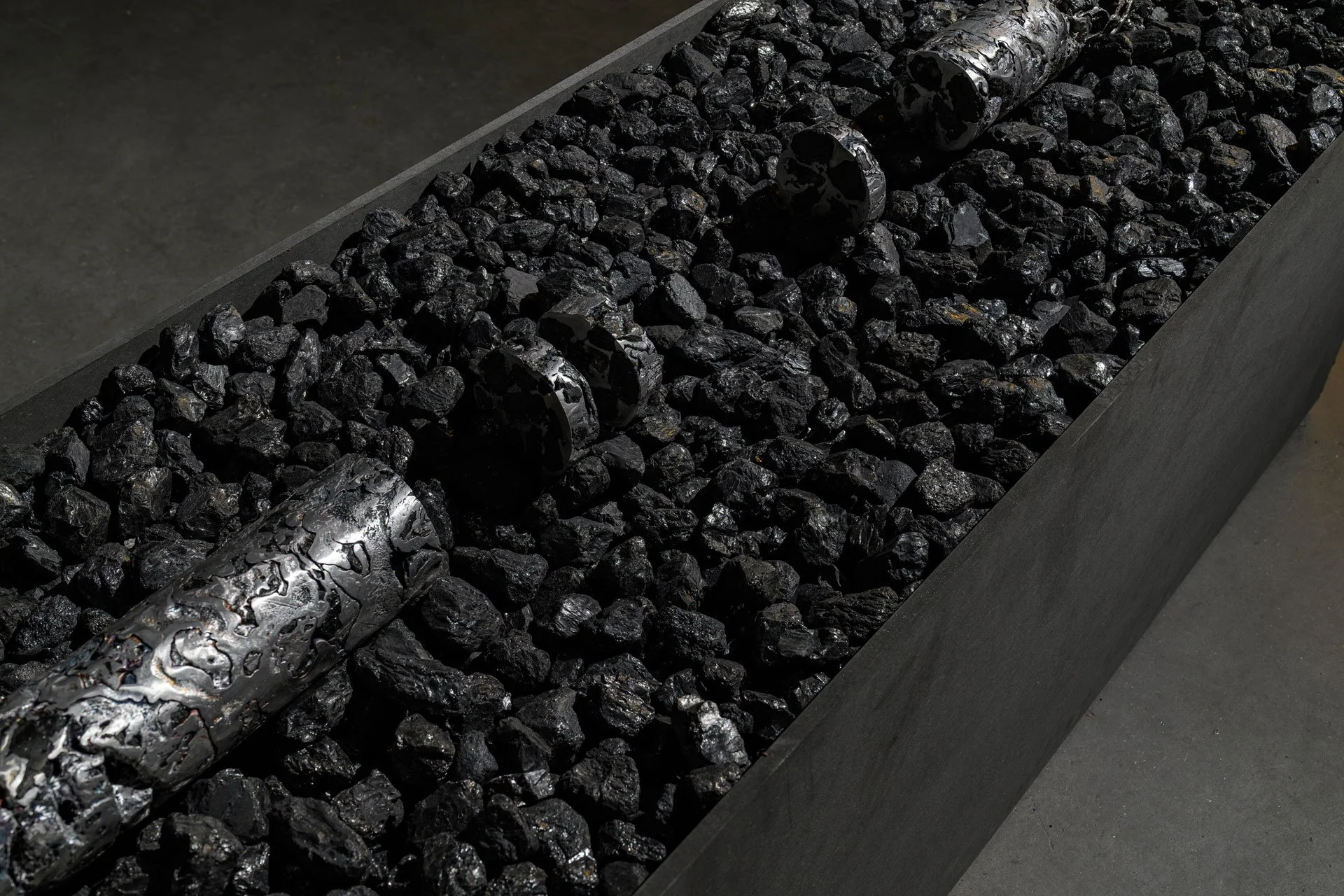
Diving Into Deviations:
An Interview with Casimir Geelhoed
Lennaerts’ contribution seeks to explore the purpose and significance of Casimir Geelhoed’s residency with FIBER and Orgelpark, focusing particularly on the premiere of Deviations at the festival’s opening. This work aims to unpack the creative process behind the residency and how it culminated in Deviations, offering insight into its artistic intent and the way it engages with the themes of the festival. Through this, Lennaerts highlights the unique collaboration between Geelhoed, FIBER, and Orgelpark, and how the residency shaped the final performance.
Casimir Geelhoed during FIBER Festival 2024. Photo credit: Sabine van Nistelrooij
A sonic landscape slowly spreads around all corners of the Orgelpark, submerging its audience in layers of sound. Casimir Geelhoed is the composer of this all-encompassing experience during the opening concert ‘Organ/Body’ at FIBER 2024. Casimir, a composer, electronic musician and software developer fluidly integrates these disciplines into his performances. His work explores the multifaceted nature of sound and the poetic potential of the digital, with Deviations being a prime example.
Deviations is a complex symbiosis of the hyperorgan and the 12-channel 4DSOUND system, played live by Casimir. The experience was hypnotic, with layers of sound gradually unfolding and increasing in complexity. The spatial sound, unique setting, and accompanying light installations created a captivating bodily experience. We caught up with Casimir to talk about his residency with FIBER and to look back on the premiere of Deviations.
Hi Casimir, how do you look back on your performance during FIBER Festival?
It was a pleasure to perform ‘Deviations’ at the opening of FIBER Festival, after my residency period at the Orgelpark. The idea for this piece has been in my head for a long time, so it was a rewarding experience to have it all come together and become reality at this beautiful occasion.
Can you walk me through your creative process and how you approached your residency at FIBER?
From the start, I had a concept in mind of what I wanted to try to achieve. The focus of the composition was to be on timbre, texture and harmonic structure, creating ‘counter voices’ of the acoustic material that would slowly deviate from the original sound through custom software effects. The meaning of the piece would lie in the friction between elements; a form of instability and fragility that arises when different layers clash in the physical space.
As a first step, I extensively explored the sound palette of the Utopa and Sauer organs at the Orgelpark, creating material that had a certain fragility, instability, and implied spatial movement in them. Secondly, I wrote a score of the composition for two organs and live processing, in the form of four movements. Thirdly, I developed a number of multichannel software effects that I used during the performance to slowly deviate the sound material from its origin, according to the score I wrote. The spatial sound system was installed in the days leading up to the concert, so, while I had a lot of time to explore the organs and write the composition, in the end everything had to come together quite quickly.
What was your impression of the theme Outer/Body?
I think my music can often be experienced as a succession of enveloping sound environments. As a composer, I try to develop a language around transformation of sound. What does it mean when a sound emerges from the distance, fades away, fragments into multiple pieces or slowly transforms into something else? Listeners can attach their own associations to these transformations. It is always an interplay between the physical sound environment that I create and the inner psychological processes of listeners.
What kind of sounds formed the basis of your compositions during the performance?
I spent a large part of the residency exploring the sounds of the Utopa and Sauer organs, specifically looking for sounds and mechanisms that are inherently ‘fragile’ or ‘unstable’. For example: trying to find the thresholds of the instrument, by supplying just enough wind that it sometimes produces a tone, and sometimes not. Or, by slowly moving one organ slightly out of tune against the other organ, creating complex interactions of tones that are spread out throughout the physical space. It can already sound vastly different when moving your head only slightly.
When composing this piece, I was always trying to create a sense of implied movement and spatiality. I challenged myself to, purely acoustically, create a sense of ‘approaching’ and ‘disappearing’ on different timescales, which I could later further accentuate electronically.
Many people were surprised to learn how much of the piece was actually purely acoustic. Also, all the electronically produced sounds were originating from live-sampled organ sounds.
Casimir Geelhoed during FIBER Festival 2024. Photo credit: Sabine van Nistelrooij
What does it mean for you to use the hyperorgan as an instrument, how did you interpret it?
The hyperorgan is an interface that allows you to play two organs at the same time. The hyperorgan itself can be controlled with a computer. On a practical level, this gives me more options at my disposal and allows me to have my hands free to control the electronics live. Most importantly, it provides a level of precision and control of parameters that enables me to find exact thresholds and really dive into specific sounds of the organs.
Can you explain how you approached combining the hyperorgan with live processing and the 12-channel 4DSOUND system?
The technical setup is an integral part of the concept of the piece. I had microphones installed inside both of the organs, from which I was getting the signal in my computer at all times.
Anytime the electronic live processing comes in in the composition, it starts off as an identical copy of the original sound. Then, I gradually start altering the recorded sound using my software, which makes the electronic part slowly deviate from the acoustic sound that you are still hearing.
Can you tell me more about how you approached the possibilities with regards to spatiality and diffusion of sound? (specifically, the layers and their interaction)
I used the spatial sound system to make sounds disintegrate into multiple individual elements with distinct positions in space. I also used reverb and echo effects that work by combining multiple virtual reflection points in space.
What challenges did you encounter when developing the software and combining it with spatial sound, how did you overcome/incorporate them?
I didn’t know beforehand how the sound system and the organs would work together, but I was pleased with the result. The 4DSOUND system gives a very neutral and evenly spread coverage. It was interesting to play around with this in-between zone: placing a physical organ in a virtual acoustic space, or subtly letting the sound system take over and then slightly alter the original sound. It worked so seamlessly that you couldn’t really tell what was coming from an organ pipe and what was coming from a loudspeaker, which is precisely what I was after.
Congratulations on this premiere, (how) will Deviations evolve in the future?
I am planning to make a record out of the material of this piece. I would be interested in performing the piece at other locations with (hyper)organs.
How do you position Deviations in relation to your previous work?
As a composer, I am interested in exploring the poetic potential of transformations of sound through signal processing. “Deviations” feels like an important step in that exploration for me.
What I’m often doing is applying a certain digital process to a sound, over and over, until the original sound itself has become unrecognisable and you are hearing the process itself. Different processes bring up different meanings and associations, depending on the type of effect or processing algorithm I am using. To me this is exploring the core of what makes abstract music work, what makes it worthwhile for me. It has something to do with processing emotions and the transiency of memories.
I sometimes tend to think of my music as a continuously flowing stream. It is about how that stream evolves over time, and what these changes mean. It can become thin and fragile, strong and solid, break off into multiple sub streams that later join again, slowly dissolve again, etcetera. It is always “going somewhere”.
Having mainly created live electronic music and fixed media spatial sound works over the past years, it was interesting to apply ideas and processes that I developed for electronic music in a situation where acoustic instruments are the starting point. It gives me inspiration and direction to approach further electroacoustic and acoustic works.
You mentioned ”fragility and sensibility”. How do those elements establish themselves in your work?
Fragility is experiencing something that can be lost or broken easily, and being aware of that. I think that sound especially is the appropriate medium to reflect on this, because sound is ephemeral. A sound only exists when it is made; it happens in a single moment in time.
In “Deviations”, fragility and transiency are approached in multiple ways, often quite subtly within multiple layers of meaning, associatively and sonically. For example: the final movement consists of a number of ‘gusts’ of wind of decreasing intensity, starting in the Utopa organ and resonating through the sound system. The amount of wind in the organ is slowly reduced, until it is unable to produce tones and only quiet ticks can be heard. What first were majestic chords passing through the entire room, now have become the tiniest sounds, which, with a little fantasy, sound like footsteps, slowly walking away into the distance.
Casimir Geelhoed at the Orgelpark during FIBER Festival 2024. Photo credit: Sabine van Nistelrooij
Could you elaborate on the ways you incorporate texture into the composition?
I often use self-developed software to transform sound over time. When transformations have to do with changes in overtones, this is seen as a change of ‘timbre’, but when it relates to more tactile qualities or a perception of density it can be seen as a change in ‘texture’. I see it as a continuum of possibilities, which I try to use expressively.
What do you feel that you are walking away with from this residency?
It was a beautiful experience to have the keys to the Orgelpark for a while and work on my own with the organs, sometimes until late in the evening.
I think I managed to incorporate a lot of exploration and experimentation into my process. I am content about how the piece turned out and how close it was to what I intended to explore.
I mostly hope that the audience walks away with something from this performance; that it was useful or beautiful in some way, in an honest way.
What’s on the horizon for you?
I feel grateful for all the opportunities that have come my way in the past months. The upcoming time I will be mainly focused on reflecting on everything that I made over the past months. Compiling it into works that can be released, but also analysing what I created and what is interesting about it. With this in hand I will venture into the future again.
What’s on the planning? In September I will do a performance with Anni Nöps at Conflux Festival in Rotterdam and in October/November I will be doing a residency at EMS in Stockholm in a spatial sound studio.
Read more

ABOUT THINKING BODIES
Thinking Bodies was conceptualised as an effort to build an exploratory body of knowledge(s), that draws upon the festival’s theme and weaves together perspectives, writing styles and formats. Drawing from the theme of the FIBER Festival 2024 edition, Outer/Body, we invited aspiring and emerging writers from a multiplicity of backgrounds to share their contributions, ranging from essays to interviews to poetries, resulting in a rich archive of knowledge.
























